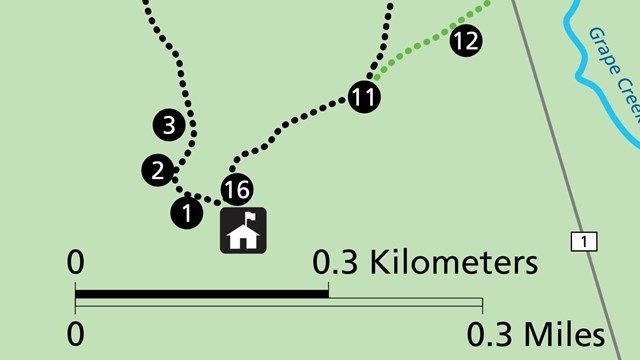
NPS/SIP: Mariah Slovacek Changing Values over TimePast human activities on the Florissant Fossil Beds National Monument (FLFO) landscape are part of the Monument’s heritage. The previous occupants of this area related to this land differently, reflecting different cultural and societal values. Through time, we can see these changing activities and relationships as a kind of “Arc of Heritage” that reflects a diversity of values and perspectives. 
Michael Kelly/SIP:Mariah Slovacek* 
NPS Ancient TribalAncient ancestors of Tribal people lived in this landscape and made use of its resources as long as 10,000 years ago. A Midland Point was discovered in 2017, documenting the human use of this landscape in the distant past. 
NPS Economic UsesHistoric economic values fueled mining, lumbering, ranching, and fossil-selling on this landscape. 
Courtesy of Harvard University Ernst Mayr Library Archive Scientific DiscoveryEarly scientific explorers realized the unique value this area offered to furthering our understanding of the Earth and its history. Scientists like Samuel Scudder have described up to 1,800 species making Florissant fossil beds one of the richest deposits in the world. 
NPS ProtectionIn 1969, this area was protected as a national monument by the actions of concerned local residents, scientists, lawyers, and politicians. Florissant became a landmark case in the environmental movement of the late 1960s and helped shape the values of that time. 
NPS* Modern TribalTribes maintain their connection to the Monument’s landscape and continue traditional activities that reflect their cultural values of preserving and honoring the land.

NPS StewardshipThe concept of geoheritage is growing. It recognizes past values and activities but emphasizes the values of preservation, education, research, recreation, and tourism. 
Stop 1: Ancient Clones
Click here to return to Stop 1. 
Virtual Tour Homepage
Explanation of the virtual tour and links to all stops. 
Stop 3: Hidden Treasures
Click her to go to Stop 3. |
Last updated: February 7, 2022
